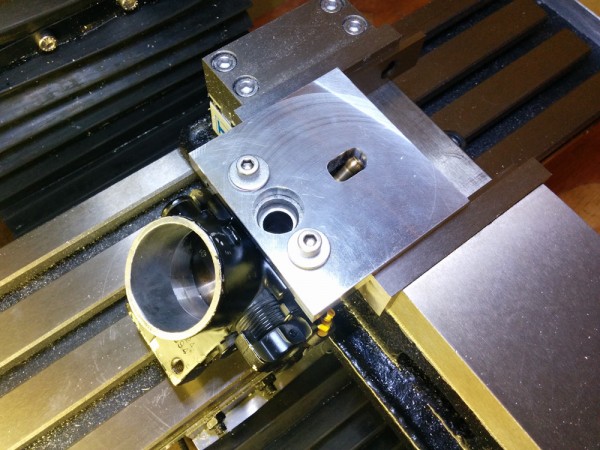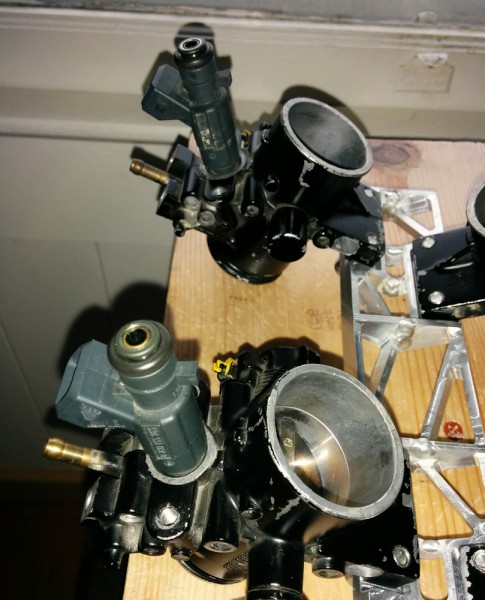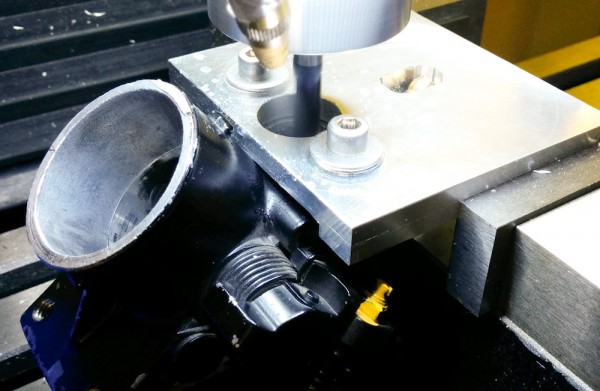The throttle bodies I’m using originally used a different brand of injectors than the Bosch EV6 ones I’m going to use. Most injectors need a 14mm diameter hole, so that was not a problem, but the hole was too shallow to allow the EV6 injectors to seat fully. Thus, minor surgery on the throttle bodies was necessary.
Needless to say, I was a bit apprehensive about taking an endmill to the throttle bodies. If something went wrong here, I’d likely not be able to get the injectors to seal properly and the throttle bodies might need to be scrapped. If there ever was a time to double and triple-check everything, this was it.
The actual operation is pretty simple, I just needed to make the 14mm hole deeper, but the problem was how to mount the throttle bodies so they were held securely and squarely in the vise. After some pondering I decided the only way to make sure they were held with the injector axis vertical was to make a plate that was held against the injector mounting face with the two screws that held the old injectors. I needed to make a few cutouts in the plate to clear various parts of the throttle bodies, but it worked well.

Here’s one of the throttle bodies attached to the fixture, which is screwed into the holes where the old injectors were mounted. The fixture was then screwed horizontally into the vise.
With the injectors securely mounted, the most important thing was now to center up the mill in the existing hole to as high accuracy as possible. Using the edge finder, you can find the two edges of the hole in each dimension and square up that way.
Any backlash in the mill directly affects the accuracy of the center finding here, since you are going in different directions for the two edges. My backlash is about 0.02mm, which should be well below what’s required for this job.
With the center found, it was just a matter of starting the program and hoping for the best.
Luckily it worked perfectly. The injectors now fit to the depth specified in the Bosch injector data sheet.

The hole is now deep enough that the injectors can be inserted and are held in by their O-rings, as they should.
Of course, it remains to be seen if the connection is air tight. Any leaks here will show up as vacuum leaks when the engine is idling. The pressure differential is less than at the seal at the top of the injectors, which must seal against the 3 bar fuel pressure, but it’s still possible to have a leak. There’s no way to tell whether it’s tight until the engine is running, but I’m fairly certain that it won’t be a problem, since it’s just an O-ring mounted in a cylindrical hole. As long as the hole is the right diameter and has a smooth surface, which they do, it should be fine.
The next step is now to manufacture the fuel rail which will hold the top of the injectors. More on that later.
